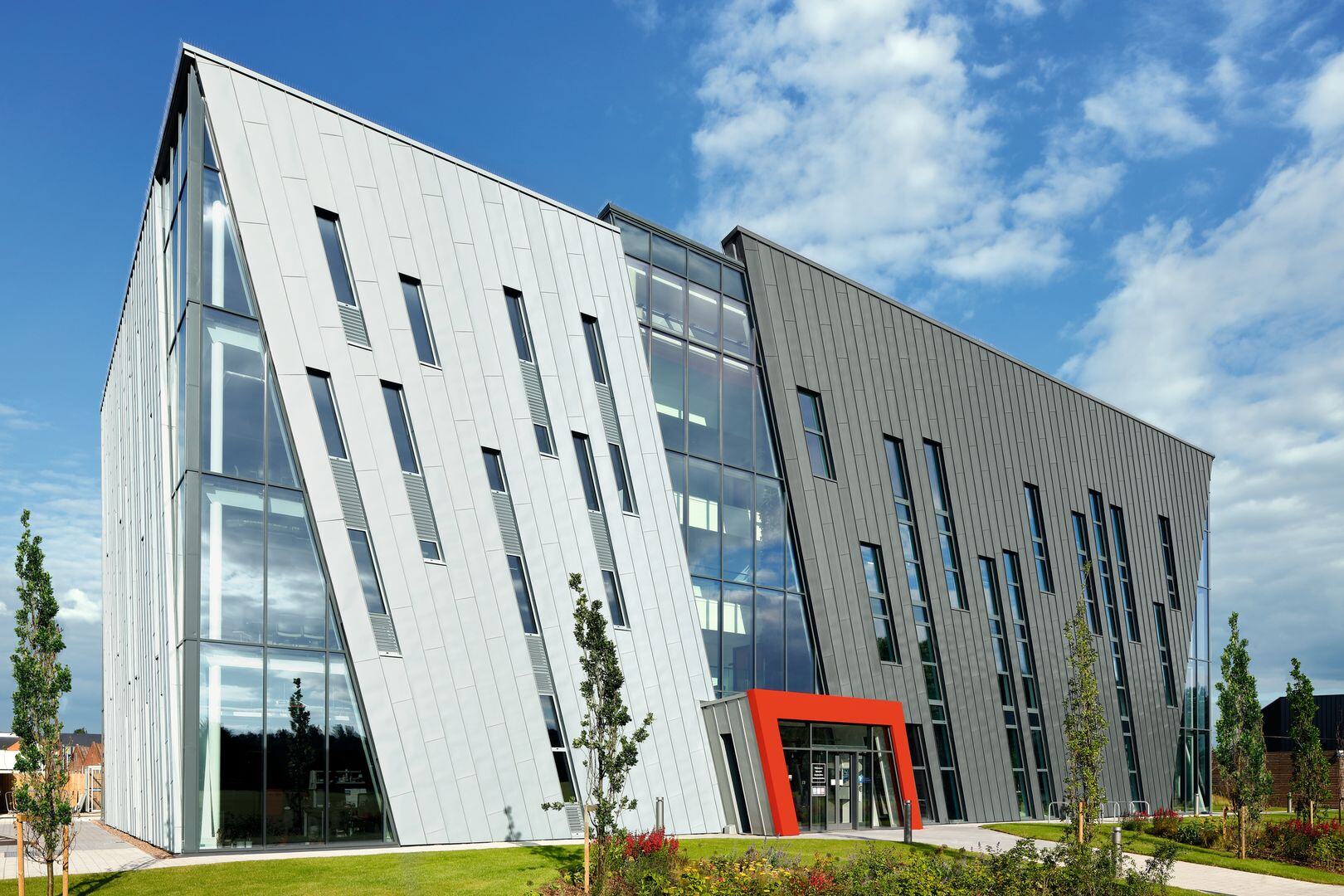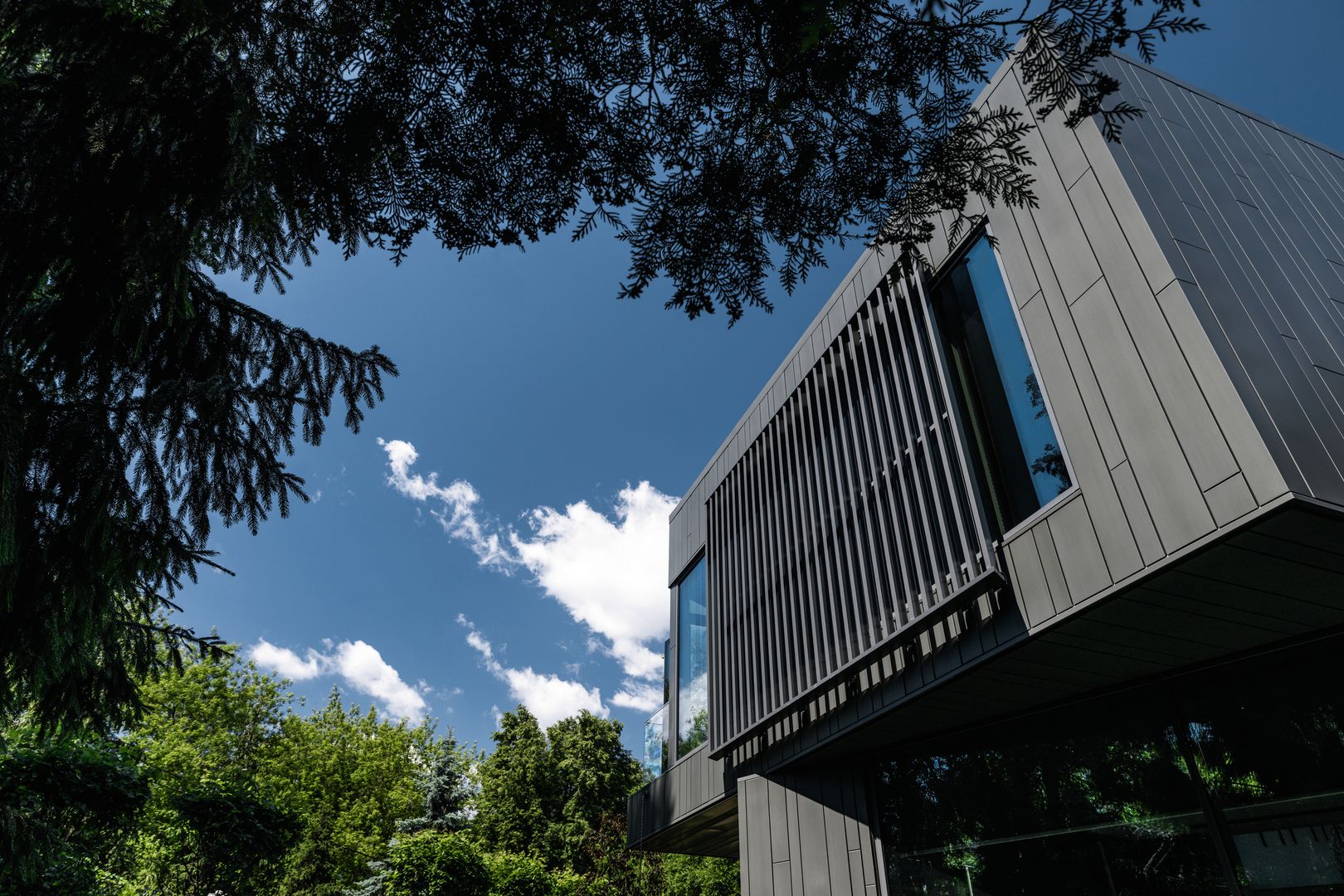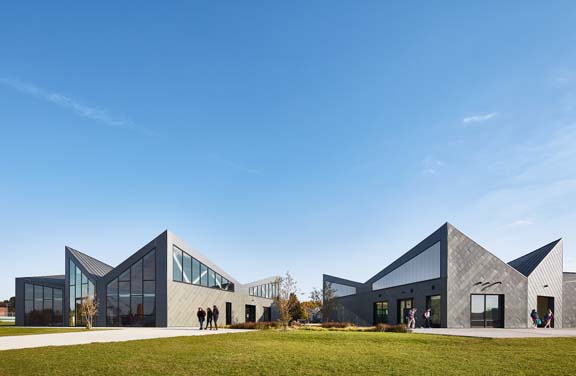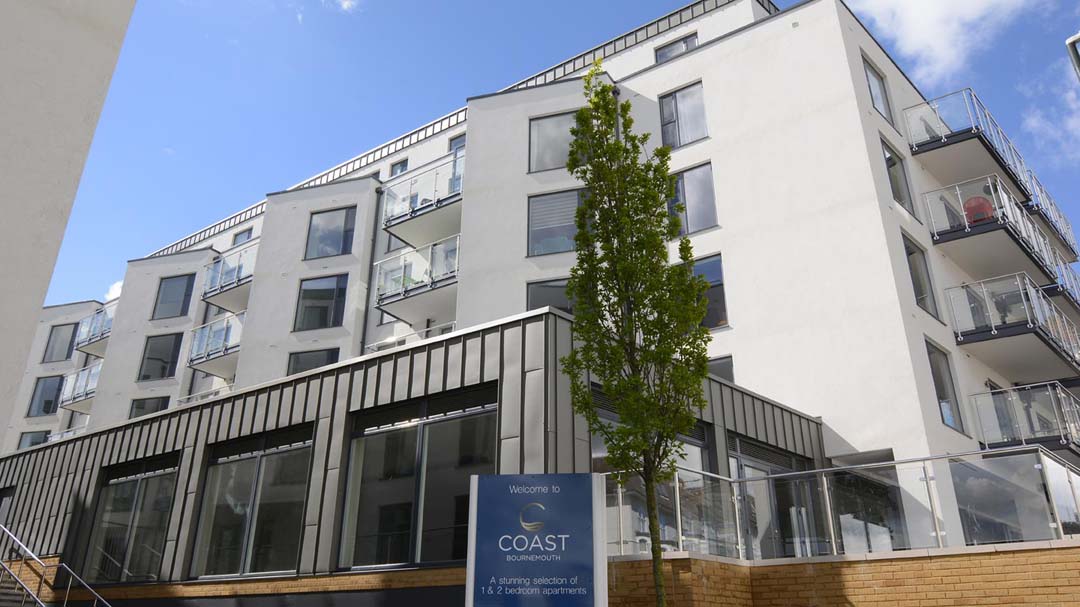
The Art and Science of Zinc Cladding: An Introductory Overview
26 Sep 2023
Acelab Team
Zinc cladding systems offer architects and designers a wide range of creative options, from modern to traditional, while its evolving natural patina adds character and aesthetic appeal. Zinc is highly durable and low-maintenance, with a lifespan of several decades. Its fire resistance and recyclability make it an environmentally responsible material selection.
What is Zinc Cladding?
Zinc cladding can be used for both residential and commercial buildings, depending on the architectural design and the preferences of the property owner or developer. The construction technique uses thin sheets of zinc applied to the exterior of a building. It is a versatile cladding material that provides durability, protection, and a modern aesthetic.
In residential settings, zinc cladding is sometimes chosen for its contemporary look and long-term performance. Similarly, it is used in commercial buildings to provide both functional benefits and an attractive facade. The decision to use zinc cladding often depends on the specific design goals and the desired appearance of the building, whether it's a home, office, retail space, or other commercial structure.
Benefits of Zinc Cladding

Zinc cladding offers a range of benefits in construction and architecture, which makes it a desirable and sustainable choice for both residential and commercial buildings.
Durability
Zinc is a highly durable material that can withstand harsh environmental conditions. It naturally forms a protective layer, called zinc carbonate or zinc patina, when exposed to moisture and air. The patina acts as a barrier that helps to prevent corrosion and protect the underlying zinc material from degradation. Zinc cladding is also highly resistant to weather elements such as rain, snow, and UV radiation.
Low Maintenance
Zinc cladding requires minimal maintenance over its lifespan. The naturally protective patina that develops over time reduces the need for regular cleaning or coatings, to save on long-term maintenance costs.
Longevity
Zinc cladding typically has a lifespan of 30 to 60 years or more, depending on factors such as installation quality, zinc thickness, climate, and maintenance. In favorable conditions, it can reach the upper end of its expected lifespan. Regular upkeep, including cleaning and inspections, can also help prolong its life. Overall, zinc cladding is renowned for its durability, and it can offer decades of protection to buildings when properly maintained.
Aesthetics
This attractive and durable cladding offers a distinctive and visually appealing look for both residential and commercial buildings. When first installed, it has a bright, metallic sheen that can provide a modern and sleek appearance. Over time, the natural aging process produces a beautiful and unique discoloration that ranges from soft gray to shades of blue-gray, green, or brown. The patina enhances the cladding's personality and gives it a sense of depth and texture. The evolving coloration, combined with its ability to catch and reflect light, makes zinc cladding an attractive choice for contemporary architecture, for a timeless and refined facade that harmonizes with various design styles.
Flexibility
Zinc cladding offers versatility in design, as zinc can be shaped to fit various architectural styles and profiles. Zinc's malleability allows it to conform to complex architectural geometries, including curves and irregular shapes. This flexibility, coupled with its low-maintenance requirements, makes zinc cladding a preferred material for architects and designers seeking adaptable and visually appealing cladding solutions for diverse building projects.
Environmentally-friendly
As a fully recyclable material, zinc cladding reduces impact on resource depletion. Its long lifespan of 30 to 60 years or more minimizes the need for frequent replacements, to help conserve materials. Overall, zinc cladding promotes sustainability through recyclability, durability, and reduced maintenance. It’s an eco-conscious option for architectural projects.
Fire Resistance
Zinc cladding has excellent fire-resistant properties. It is inherently non-combustible, with a Class A flame-spread rating. This fire resistance enhances building safety, as zinc cladding can act as a protective barrier that helps to contain fires.
Zinc cladding complies with various fire resistance test standards, including those established by ASTM International and the European Union. Specific standards can vary depending on the region and the cladding manufacturer. Architects, designers, and builders should verify the specific fire resistance certifications and ratings provided by the manufacturer of the zinc cladding they intend to use for each project to ensure that it meets local building code requirements and safety standards.
Insulation Capability
Zinc is not an insulating material, but it can be part of a well-insulated wall assembly. Insulation options for zinc cladding include:
Rigid Insulation Panels
Rigid insulation panels, such as extruded polystyrene (XPS) or polyisocyanurate (ISO) foam boards, can be installed behind zinc cladding in order to provide thermal insulation.
Ventilated Façade Systems
Zinc cladding can be installed as part of a ventilated façade system, which includes an air gap behind the cladding and structural wall. The gap allows for the installation of insulation and promotes natural ventilation, to reduce heat buildup and enhance thermal performance.
Insulating Sheathing
Insulating sheathing materials, such as structural insulated panels (SIPs) or insulated concrete forms (ICFs), can be incorporated into the wall assembly before the application of zinc cladding. These systems offer both structural support and insulation.
Insulated Metal Panels (IMPs)
Zinc panels that combine the cladding material with built-in insulation are available from several manufacturers. The “pre-insulated” panels can simplify and streamline the construction process.
Design Versatility
Architects often choose zinc cladding for its design flexibility and the expressive possibilities it offers. Zinc's malleability allows it to take on diverse shapes, from clean modern lines to intricate traditional detailing. This adaptability accommodates a spectrum of architectural styles, to give architects the freedom to explore and innovate.
Furthermore, zinc's aesthetic evolution with colors changing and developing naturally over time, is a unique asset. This dynamic transformation adds interest and depth to buildings, to make them both modern and timeless. Inherent properties of zinc cladding allow architects to craft distinctive façades and play with light and shadow to create captivating visual effects. Zinc also harmonizes effectively with other materials, for seamless integration into complex designs incorporating a variety of materials.
Zinc Cladding Applications

Zinc cladding systems offer many options for both residential and commercial construction. The broad versatility of zinc cladding makes it well-suited to various sectors in the construction industry, where both aesthetics and functionality are essential:
Residential Homes
Zinc cladding can be used for roofing, façades, and exterior wall elements in residential projects. Its sleek appearance and aging patina make it an attractive choice for contemporary and traditional homes alike.
Commercial Buildings
In commercial architecture, zinc cladding is employed for exterior façades, entryways, and feature walls, to enhance the building's visual appeal and contribute to its unique identity.
Educational Institutions
Zinc cladding can be found in educational facilities, and is often used for roofing and façades. Its durability and aesthetics suit both modern campuses and historic buildings.
Healthcare Facilities
Hospitals and medical centers choose zinc cladding for its durability, fire resistance, and visual appeal, for a welcoming and safe environment.
Retail Spaces
Zinc cladding can be integrated into the design of retail stores and shopping centers, to create eye-catching storefronts and exterior features that support brand identity and personality.
Hospitality Sector
Hotels and restaurants utilize zinc cladding for exterior elements to create a unique and stylish appearance.
Industrial Facilities
Some industrial structures and warehouses use zinc cladding for its durability and resistance to harsh environments.
Zinc Cladding Case Studies
Eleanor Boathouse, Chicago, IL

The Eleanor Boathouse in Chicago showcases the versatile use of zinc cladding.
Designed by Studio Gang Architects, the material's aesthetic adaptability allowed the architects to craft unique, undulating forms that mirror the movement of rowing. This stunning structure features a dynamic façade that combines zinc panels and glass, to create a sleek and reflective surface that beautifully complements the surrounding water. The 19,000-square-foot facility incorporates both architectural zinc cladding and roofing.
A highly malleable material, zinc suited the structure’s unique shape, while also offering strength and longevity. Entirely recyclable, the material carries a potential lifespan of more than 100 years. The project received a Grand Award at the 2018 Metal Architecture Design Awards, as well as a Blue Ribbon from the Friends of the Chicago River Blue Awards program.
Coast, Bournemouth, UK

Coast, a modern apartment building in Bournemouth, UK, showcases the innovative use of zinc cladding in residential architecture. Designed by BrightSpace Architects, the façade of Coast incorporates vertical zinc panels that lend a contemporary and dynamic look to the building's exterior. Zinc cladding was chosen due to its exceptional ability to withstand harsh weather conditions. Located on the coast, the building is exposed to the corrosive effects of saltwater, high winds, and frequent rain. Zinc's natural resistance to corrosion and its durability make it an ideal choice for such a challenging setting. Coast exemplifies how zinc cladding can be creatively applied in residential projects, to enhance the architectural character, longevity, and environmental sustainability of modern urban dwellings.
Discover the Best in Zinc Cladding with Acelab
Acelab is a cloud-based collaboration platform that offers a range of tools and resources to help architecture professionals research, compare and select building products for their projects. With Acelab, users can access product data, technical specifications, and CAD details from leading manufacturers, as well as tools to create and manage project libraries, product lists, and specification documents.
Acelab is designed to help architecture professionals save time and streamline their workflows by providing a centralized source of information and tools for building product research and specification tasks.
